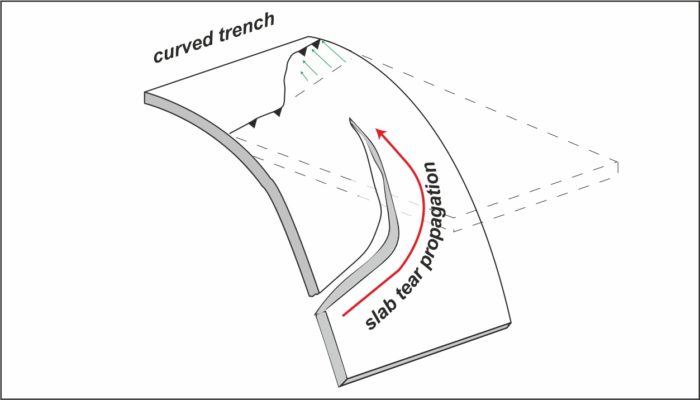With the EGU General Assembly (GA) less than a month away, it’s time for attendees to start planning their schedule to get the most out of the week. In today’s blog, Geodynamics (GD) Division Early Career Scientist (ECS) representative Megan Holdt highlights the networking events for the GD Division, provides an overview of key events at the GA and gives some tips for first-time attend ...[Read More]
How does slab tearing evolve?
Slab tearing refers to the gradual propagation of the break-off of a subducting plate. As observed in numerous modern and ancient convergent tectonic settings, the growth of the tear “window” in the downgoing plate has strongly influenced various geologic and geodynamic processes, such as depocenter migration of foreland basins, uplift rates in mountain ranges, earthquakes, volcanism, and flow pat ...[Read More]
The first observational evidence for a volcanically active Venus

Our neighbouring planet Venus is gaining popularity in the terrestrial planetary sciences, especially since the selection of three new Venus missions by NASA and ESA in 2021. Now, for the first time ever, scientists have directly observed surface changes that indicate active volcanism on Venus. This discovery was made with data from NASA’s 30-year-old Magellan mission and is only a small preview f ...[Read More]
Planetary Boundaries: A Framework against Geodynamics?
How can we determine a ‘safe operating space’ for humanity? In this week’s blog, Professor Ilan Kelman from University College London shares his thoughts about Planetary boundaries, and whether this framework will be successful for the next generations to come. The planetary boundaries framework (Rockström et al. 2009ab; Steffen et al. 2015) might be useful for communicating some of humanity’s im ...[Read More]



